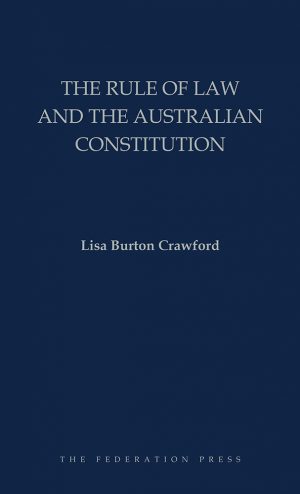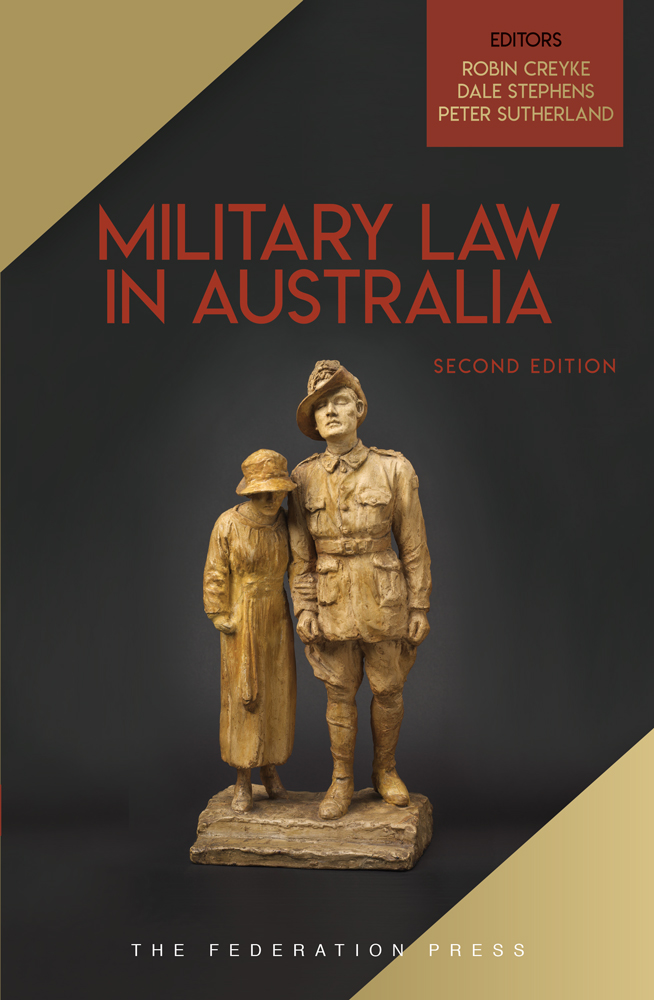This is a practical book about the law governing practice and procedure in Tribunals with annotations on the Civil and Administrative Tribunal Act 2013 (NSW).
Tribunals exercise administrative, curial and inquisitorial powers and are playing a greater role in the administration of justice in Australia for resolving administrative and civil disputes than ever before. This has resulted in the consolidation of the many tribunals in the States and Territories into large ‘super tribunals’ covering the field of administrative disputes between citizens and government, civil disputes between citizens, and supervisory, disciplinary and protective matters concerning protection of the community and individuals.
Designed with ease of use in mind, this book includes:
- commentary on the law of tribunals;
- annotated versions of the Civil and Administrative Tribunal Act 2013 (NSW) and the Civil and Administrative Tribunal Rules 2014 (NSW);
- a comparative table highlighting corresponding sections of legislation for the tribunals in the various States and Territories.
Foreword by the Hon Justice Robertson Wright, President, NSW Civil and Administrative Tribunal
Acknowledgements
Author’s Note
About This Book
Table of Cases
Table of Statutes
Comparative Table of Legislation
PART A: INTRODUCTION
A.1 Classification of tribunals
A.2 Nature of tribunal proceedings
A.3 Jurisdiction
A.4 Discretion
A.5 Principle of finality and estoppel
A.6 Jurisdictional error
A.7 Conduct of the parties in tribunals
A.8 Consumer claims
A.9 Procedural fairness
A.10 Evidence
A.11 Privilege
A.12 Self-incrimination privilege
A.13 Abuse of process
A.14 Damages
A.15 Interim relief
A.16 Views, photos and video tapes
PART B: CIVIL AND ADMINISTRATIVE TRIBUNAL ACT 2013 (NSW)
Sections and annotations
Part 1: Preliminary
Part 2: Establishment of Tribunal
Part 3: Jurisdiction of Tribunal
Part 4: Practice and procedure
Part 5: Enforcement
Part 6: Appeals
Part 7: Miscellaneous
B.S1 Schedule 1: Savings, transitional and other provisions
B.S2 Schedule 2: Provisions relating to members
B.S3 Schedule 3: Administrative and Equal Opportunity Division
B.S4 Schedule 4: Consumer and Commercial Division
B.S5 Schedule 5 : Occupational Division
B.S6 Schedule 6: Guardianship Division
B.S7 Schedule 7: Examples of procedural rule-making powers
PART C: CIVIL AND ADMINISTRATIVE TRIBUNAL REGULATION 2013 (NSW)
Clauses and annotations
Part 1: Preliminary
Part 2: Fees and witness allowances and expenses
Part 3: Miscellaneous
C.S1 Schedule 1: Resolution processes
C.S2 Schedule 2: Fees
PART D: CIVIL AND ADMINISTRATIVE TRIBUNAL RULES 2014 (NSW)
Rules and annotations
Part 1: Preliminary
Part 2: Time
Part 3: Electronic case management
Part 4: Service
Part 5: Documentation
Part 6: Commencement of proceedings
Part 7: Parties to proceedings and representation
Part 8: Conduct of proceedings
Part 9: Determination of proceedings
Part 10: Functions of registrars
Part 11: Miscellaneous
PART E: PROCEDURAL DIRECTIONS
E.1 All NCAT proceedings
E.2 Administrative and Equal Opportunity Division
E.3 Consumer and Commercial Division
E.4 Guardianship Division
E.5 Occupational Division
PART F: GUIDELINES
PART G: ANNOTATIONS TO CONSUMER, TRADER AND TENANCY TRIBUNAL ACT 2001 (NSW)
Index
Frank Holles, Bar News, NSW Bar Association, Summer 2016This book is an invaluable guide for the busy practitioner. While its emphasis is obviously the NSW legislation, it has a handy overall cover of the other states and the federal tribunals.
The key to any well-written practice, is a good index, a clear paragraphing system, and a coverage of the major issues likely to confront both the experienced lawyer and the novice. The use of relevant case law, both to refine the nuances of the legislation and to set out clearly its full effect, is also vital. I think this book will be of great assistance to the practitioner. … great assistance to the practitioners who are required to provide advice to clients on the tribunal, its powers and its processes. It would be a valuable resource in any law library.
Queensland Law Reporter – 22 July 2016 – [2016] 28 QLR[The book] will be of most interest to our readers in New South Wales, of which there are many. It is unashamedly a practitioner’s text and one which ought to be or to become familiar to all who practice in the jurisdiction. Its shape is taken from the Civil and Administrative Tribunal Act which is only natural. It is well researched with substantial references to many modern cases dealing with the issues which arise in NCAT. It avoids being too parochial and many of the references are to other jurisdictions (both State and Federal) where the same issues arise under cognate legislation. It is a very useful and practical handbook. It will no doubt be the template for other publications for other jurisdictions.
Anthony Lo Surdo, Australian Banking and Finance Law Bulletin & Financial Services Newsletter, July 2016The Civil and Administrative Tribunal of New South Wales (NCAT) commenced on 1 January 2014. NCAT brought together 22 previously existing tribunals and bodies into one multi-jurisdictional tribunal with four divisions and its own internal appeal mechanism.
It is accordingly timely that Mr Levingston, a member of NCAT who has had a long association with that tribunal and with its predecessor, the NSW Consumer, Trader and Tenancy Tribunal (CTTT), should write this work. It is dedicated to providing the reader with first, an understanding of the nature of tribunals, their jurisdiction and the conduct of proceedings and, second and importantly from the perspective of the practitioner, provides annotated versions of the Civil and Administrative Tribunal Act 2013 (NSW) and the Civil and Administrative Tribunal Rules 2014 (NSW).
Given the workload of NCAT, it is quickly developing its own jurisprudence. The author seeks to capture the authorities as they relate to various aspects of the work and responsibilities of NCAT. The annotations are clear and can easily be digested.
It is an essential accompaniment to anyone appearing before NCAT.
Gemma McKinnon, AJ Admin L, (2016) 23The Law of Tribunals is a wise purchase for practitioners, and self-represented parties would also benefit from obtaining access to a copy. I eagerly await future editions.






